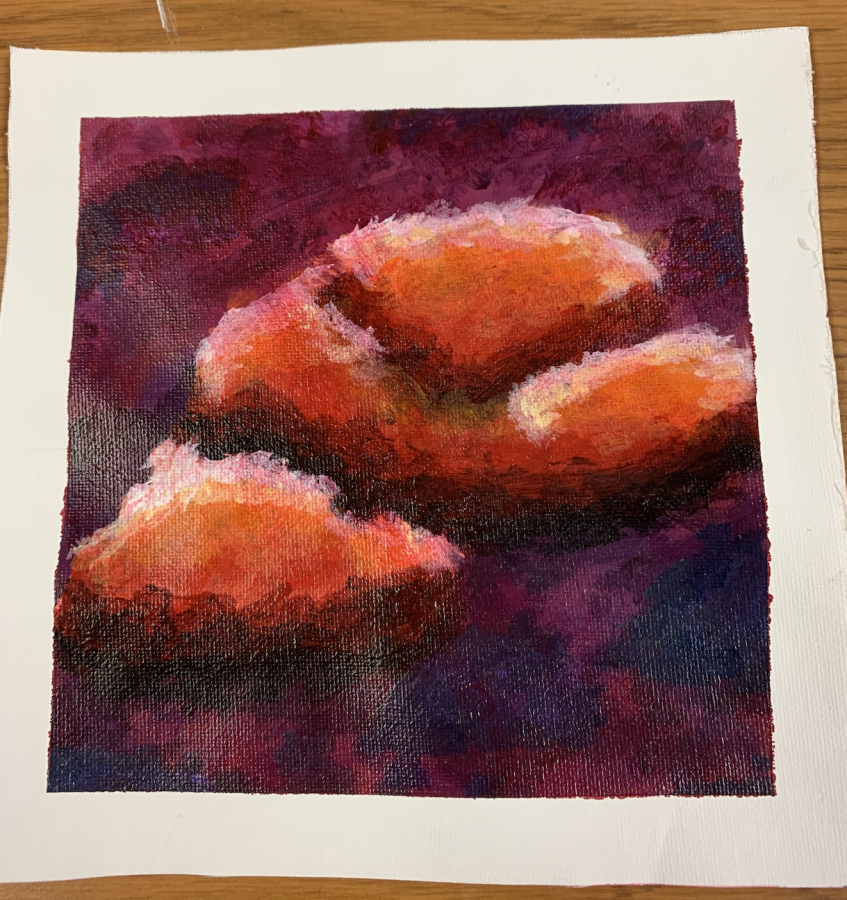Using the Art Studio After a Year of Dry Paint
September 30, 2021
Keys unlock the cabinet where the paint tubs are stored. It’s been far too long since they’ve seen the light of day. Mandy Gregory, painting and art I teacher, hopes the paint hasn’t dried up. Because August 12th, 2021 is the first time in over a year students are coming back to class to use the studio.
“Teaching last year was like teaching in the dark,” Gregory said. “When I would give assignments, do demo videos and talk to my kids, I couldn’t see anything that they were doing until they turned it in. I couldn’t correct anything, give them tips or guide them. I just hoped that they could understand me.”
For the 12 years Gregory has been teaching, she has given all her art I students the same clay project each year. She expected it to be the same when she started teaching on campus three years ago, but little did she know that last year would break her streak.
“We tried to give the students as much as we needed to, but there were several projects that we needed to scrap,” Gregory said. “Clay for example, it would be too much giving them clay, getting it back, firing it, giving it back, glazing it. It was just something we wouldn’t be able to do.”
There are over 10 types of acrylic paints and several types of watercolor paints. Despite the 5,000 items Gregory used to make art kits made for her students, they only got access to one type of acrylic and one type of watercolor.
“I wanted to introduce different types of paint to the students taking painting, like oil paint,” Gregory said. “We couldn’t get to that because I couldn’t give them access to everything they needed. I have so many types of paint in my classroom- and my students only got to see a fraction of them.”
However, some students came to campus to learn in person. The students that sat in Gregory’s nearly empty classroom didn’t get access to extra materials that the students on ZOOM didn’t have, but they had an experience different from most.
“It was like a private lesson working with the kids that showed up in person,” Gregory said. “I actually got to connect with them and create meaningful connections. As an art teacher, it’s so important for me to get to know my students. In order to understand their process when it comes to art I have to get to know them as people. It’s so hard to understand the creative process of a black screen on a computer.”
Art is one of the most subjective things to grade, everyone has their own style. So in order to properly understand the artist behind the art, Gregory creates relationships with all her students- something done much easier in person.
“I love getting to know my students,” Gregory said. “That’s why I teach. How could I possibly understand the meanings and themes someone will put into their art if I don’t know them as people? On ZOOM, they were just names on a black screen, I knew nothing about them. But now that we’re back in person, I can see them from all angles. Their styles, their actions, their personalities. I give my students a way to express themselves with art, and I love how everyone expresses themselves differently.”




